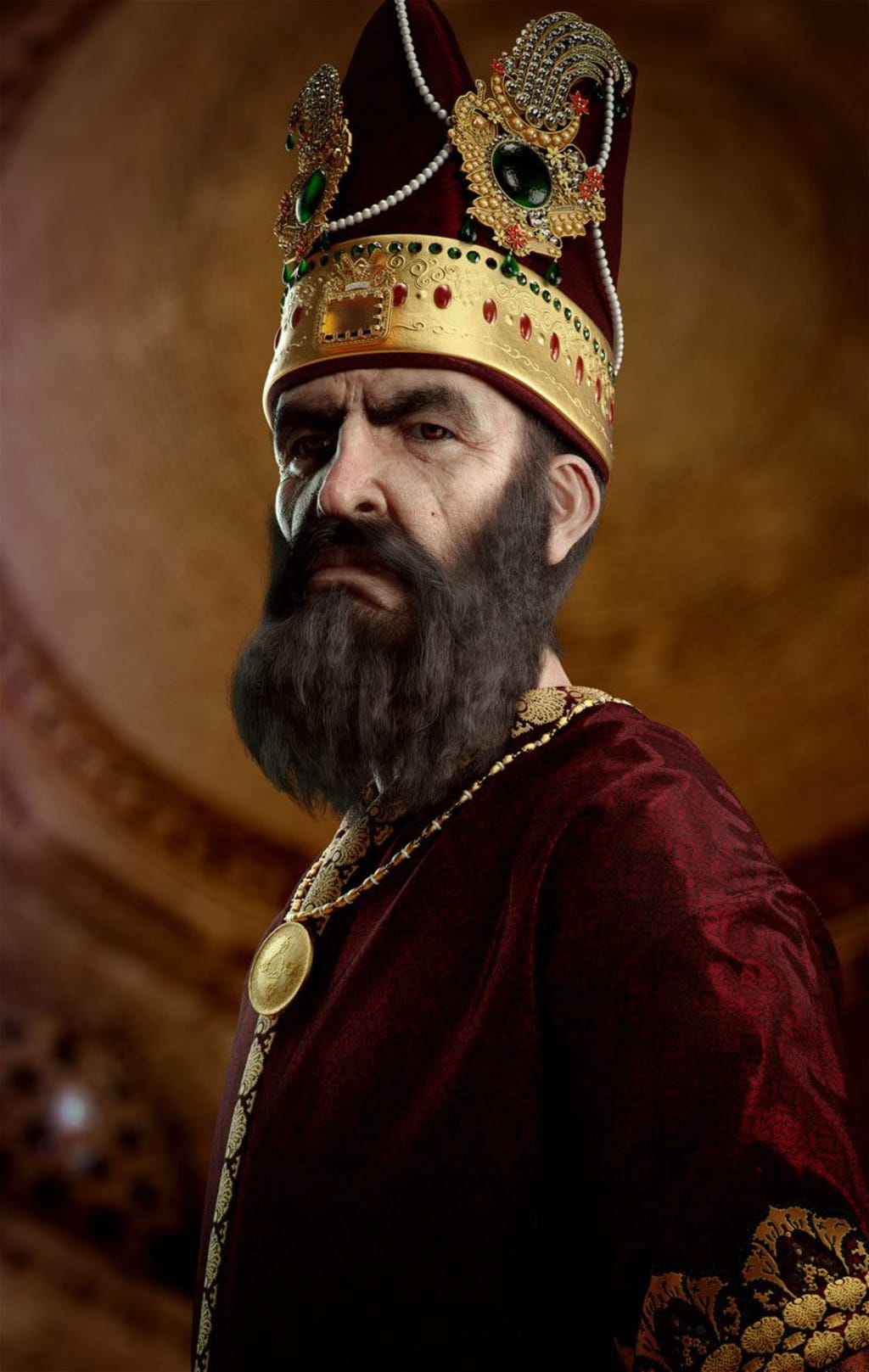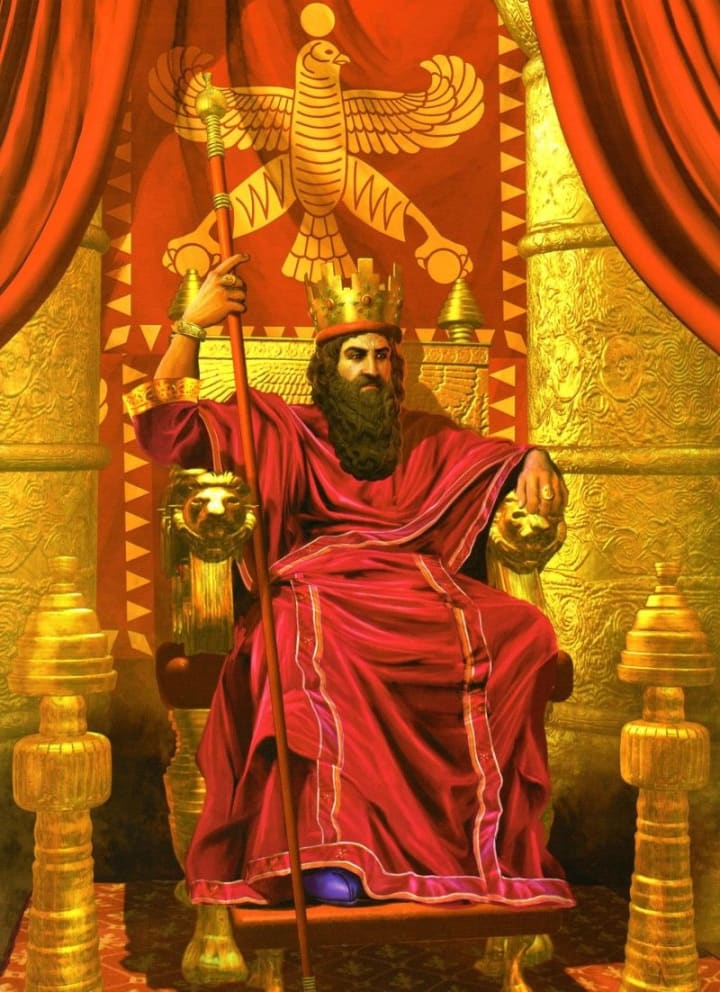Xerxes the First's Life and Rule: 9 Facts!
King Xerxes is generally seen as a tyrant because of his invasion of Greece.

Xerxes I signifies the beginning of the Achaemenid Empire's downfall, with a reign marked by revolts. Ruler Xerxes is possibly the most prominent Achaemenid Persian king, best notable for his inability to conquer Greece. Xerxes I was known for severe penalties, womanizing, and depleting the Persian empire's resources. He created massive palaces and other buildings at Persepolis, leaving his imprint on both European and Asian history. Here are nine facts regarding King Xerxes' life and reign.
Click here to see the full video.

Darius the Great designated his son Xerxes as his successor prior to his death in 486 BC. However, Xerxes was not the family's eldest son. Artabazenes, his half-brother, was born before Darius took the throne. Artabazenes first claimed the right to the throne. Xerxes' mother, on the other hand, was Atossa, the daughter of Cyrus the Great, the Persian ruler who established the Achaemenid Empire. Artabazenes' mother, on the other hand, was a commoner. The symbolic significance of picking Cyrus' grandson as his heir over his own first-born son was not lost on the astute Darius. This was the determining issue in negotiations between Artabazenes, Xerxes, and Atossa. Xerxes was seen to have a better claim to the throne because he was Darius' first son and a descendant of Cyrus. Artabazenes made no arguments or challenges to the verdict. When King Xerxes came to power, he was around 35 years old and had been the satrap of Babylonia for about a decade. After rising to the throne, one of Xerxes' first jobs was to cope with an Egyptian insurrection. The revolt had started under Darius, but he died before it could be put down. In roughly 484 BC, King Xerxes led the Persian army to crush the insurrection. However, the disturbance did not end there, as another rebellion erupted in Babylon. Both Cyrus and Darius saw Babylon as a distinct component of the empire, referring to themselves as "King of Babylon." Xerxes I, on the other hand, dropped the title and referred to himself as "King of the Persians and the Medes." He subdivided the Babylonian satrapy into smaller regions and imposed heavy levies. This, along with his enhancement of the city's status, looked to spark a series of revolts. Xerxes appears to have taken the insurrection personally. The city was besieged, and Xerxes was said to have destroyed one of Marduk's holy sculptures. Modern historians argue that even Xerxes would not have committed such a heinous deed. Regardless, the uprisings were brutally put down. Xerxes had intended to carry on his father's plans for a second invasion of Greece, but the rebellions had forced him to postpone his preparations.
Click here to see the full video.

Because of his enormous invasion in 480 BC, Xerxes I has a notorious place in Greek history. Xerxes was seeking vengeance for his father's defeat at Marathon a decade before. Following a naval victory at Artemisium, the Persians defeated the Spartan king Leonidas' soldiers at Thermopylae. Xerxes' army then rampaged over Greece, sacking Athens. The Greeks scored an unlikely victory at the naval battle of Salamis, which shifted the course of the fight, just as Xerxes looked to be gaining a good ending for his campaign. From a cliff overlooking the fight, King Xerxes witnessed his armada succumb to the Athenian leader Themistocles' brilliant ruse. His fleet had been devastated. Following the loss, Xerxes returned the majority of his surviving soldiers to Persia. He considered that destroying Athens was sufficient triumph, and he left his commander and brother-in-law Mardonius to finish Greece's subjection. However, Mardonius was assassinated, and the Persians were beaten in 479 BC at Plataea. At the same time, a third naval engagement at Mycale annihilated most of the Persian fleet. Xerxes' imperial aspirations in Greece were dashed, and few of his warriors survived the lengthy voyage back to Persia. King Xerxes intended to cross the Hellespont in order to commence his invasion of Greece. This crucial strait, known in modern times as the Dardanelles Strait, defends the divide between mainland Asia and the Gallipoli Peninsula. Xerxes ordered the construction of a network of flax and papyrus pontoons over the Hellespont to allow his enormous army to cross. However, the water proved to be a fickle beast, and the pontoons were demolished by a storm. Xerxes, certain that the water had plotted against him, ordered that the Hellespont be punished for its disobedience. He gave the sea three hundred lashes and tossed a set of chains into the ocean. Xerxes then had the first engineering staff killed, according to Herodotus. The following squad had more luck, and the Persian army was ultimately able to cross the Hellespont. According to Herodotus, Xerxes spent seven days transferring five million troops across the bridges. However, later historians feel this was greatly exaggerated for dramatic purposes. According to current estimates, Xerxes crossed the Hellespont with around 360,000 men. After crossing through Macedonia, one of Persia's vassal nations, the army continued up through Thrace, in today's Balkans, and into Greece.
Click here to see the full video.

To prepare for the Greek invasion, King Xerxes implemented conscription throughout his dominion. Among those recruited were the five sons of Lydian ruler Pythias. Pythias demanded that his eldest son continue to be his heir. Xerxes took anger, believing Pythias questioned the invasion's success. He is said to have hacked Pythias' son in two, displayed the body on either side of the road, and marched the troops between the gruesome marks. Xerxes I was also accused of being a womanizer. He tried but failed to win his brother's wife, Masistes. Instead, he had an affair with Masistes' daughter, Artaynte. Xerxes was dressed in a lovely robe made by his wife, Amestris. Artaynte requested it, but Xerxes knew it would expose his affair to his wife. He reluctantly consented after failing to provide other presents. Amestris was enraged. Amestris ordered that Artayante's mother be brought to her and blamed her for her daughter's actions. Xerxes attempted to convince her again, but Amestris was adamant. Amestris had her royal guards mutilate and disfigure the mother once she was in her custody. Masistes revolted, but Xerxes killed him and his followers. Following his costly and disastrous Greek expedition, King Xerxes turned his focus to a series of grandiose architectural projects. He expanded the royal metropolis of Persepolis built by his father, Darius. He completed Darius' palace and the apadena (audience hall), adding a gorgeous enamel veneer to the exterior. Xerxes I then started building his own palace. Eager to outdo his ancestors, Xerxes had his palace erected twice as big as his father's, with a terrace connecting the two. Along with his massive palace, Xerxes erected the enormous Gate of All Nations and the Hall of a Hundred Columns. According to modern historians, the latter was Xerxes' treasure. He was also in charge of maintaining the Persian Royal Road between Susa and Sardis. The cost of these constructions put the Achaemenid Empire's treasury under even more pressure. Following his costly conquest of Greece, Xerxes aggressively taxed his satrapies and subjects in order to pay his expensive projects. This undoubtedly produced discontent and hatred across the empire, and may have led to Xerxes' eventual murder.
Click here to see the full video.

Persian authority in the Aegean was devastated after the defeats at Plataea and Mycale. The Greeks, headed by Pausanias of Sparta at first, launched a counter-attack aiming at freeing Greek possessions in Asia Minor. Athens and its other city-state partners, who comprised the Delian League, also made significant contributions. First, the Greeks expelled Persian garrisons from Thrace. Pausanias then captured Byzantium in 478 BC. Pausanias had led the Greeks to victory at Plataea, but now he had done the unthinkable: he had made peace with King Xerxes. Despite its defeat in Greece, Persian remained a strong powerhouse and a danger. However, in 475 BC, an Athenian commander called Cimon defeated Pausanias and captured Byzantium for the Delian League. Xerxes began assembling a fresh army to battle the Greek intruders. Cimon defeated the Persians twice on the same day in 466 BC in the Battle of Eurymedon on Asia Minor's southern coast. First, he destroyed a Persian navy dispatched to confront him. Then, despite being outnumbered, he beat a Persian ground army on the shore. Cimon's operations were thwarted by events on the Greek mainland, but the loss at Eurymedon assured that Persia would never attack Greece again. Because no genuine Persian documents from the Achaemenid Empire exist, our primary sources of knowledge are Greek. Figures like as Herodotus have given King Xerxes a very bad image. Unlike his predecessors Cyrus and Darius, who were admired by many Greek intellectuals, Xerxes I is characterized as an effeminate despot. In the Greek playwright Aeschylus' play The Persians, Xerxes is shown as a person obsessed by his own arrogance. The drama is set during Xerxes' invasion of Greece, namely the Battle of Salamis. The play's main protagonists are Xerxes' mother, Atossa, and the spirit of his father, Darius. Aeschylus had them debate their son, stating that he thought himself beyond even the Gods. The Persians contributed to the Greeks' notion that Easterners, as they called to the Persians, were the opposite of Greek principles. Xerxes became an easy target, acting as a symbol for the Greek opinion that he lacked emotional control. He is typically portrayed as rage-filled against the Greeks, regretting his defeats. King Xerxes may not have been a popular monarch after emptying Persia's wealth via unsuccessful military battles and extravagant architectural projects. Artabanus, a powerful person in the Persian court, allegedly killed Xerxes and his son Darius in 465 BC. Artabanus' origins are unknown; he was most likely one of Xerxes' top officials or a member of the royal guards. Megabyzus, the Babylonian satrap who was married to one of Xerxes' daughters, may also have backed Artabanus. Megabyzus, however, betrayed Artabanus after Xerxes was dead. In retaliation, Xerxes' surviving son Artaxerxes I slew Artabanus and his sons, reclaiming the throne. Fresh revolts erupted in regions like as Egypt and Bactria, resulting in more confrontations with Greece. Ironically, Artaxerxes' reign began on the same same day as his father's. Even after his death, Xerxes remained a reviled figure in Greece. As retaliation for the destruction of Athens, Alexander the Great invaded Persia over a century later and targeted Xerxes' palace at Persepolis.
About the Creator
Father of History
Welcome to Father of History!
Your mind-blowing History channel!
All about History and Mythology in one place.
Our goal is to create educational resources that will make people love history and mythology.






Comments
There are no comments for this story
Be the first to respond and start the conversation.